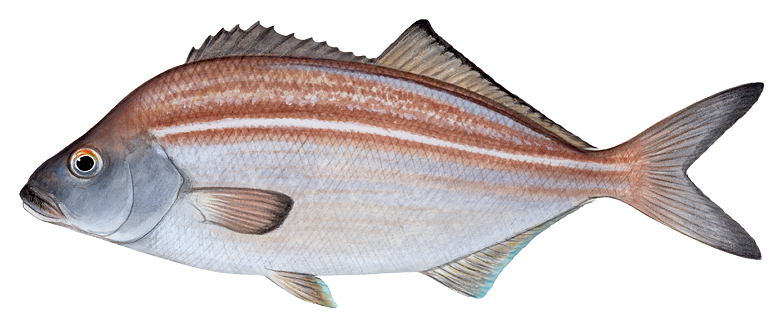Bastard Trumpeter
pinungana (Fish)
In palawa kani, the language of Tasmanian Aborigines, with thanks to the Tasmanian Aboriginal Centre.
Latridopsis forsteri (Bastard Trumpeter)

2021/22 Bastard Trumpeter Status (Released March 24)
| Stock Status | DEPLETED | ||
| Summary | Trends in commercial and recreational catches of Bastard Trumpeter suggest record low population levels and that the species is recruitment overfished. The current minimum legal size limit is below the size at maturity, and the fishery is based almost entirely on juvenile fish. Data-limited stock assessment methods suggest that stock recovery under current levels of catch is theoretically possible, but evidence of recovery is lacking. | ||
| Importance | Key | ||
| Stock | Tasmanian Scalefish Fishery | ||
| Indicator(s) | Catch, effort and CPUE trends | ||
| Managing jurisdiction | State (Tasmania) | ||
Background
Bastard Trumpeter was one of the first fish species to be commercially exploited in Tasmania, with early European settlers targeting this species on shallow reefs close to Hobart. Bastard Trumpeter is a schooling species with adults inhabiting deeper water (≤ 160 m), while juveniles are associated with shallow reefs. For this reason, the Tasmanian commercial and recreational fisheries are based almost entirely on juvenile fish. In recent years, Bastard Trumpeter has been taken more as a by-product of commercial fishing activities rather than as a target species, with recreational catch similar to, or exceeding, commercial landings. Since 2010, the adult stock of this species is suspected to have steadily declined.
The full 2021/22 Scalefish Assessment, released March 2024, can be found at the link:




Social and Economic Indicators